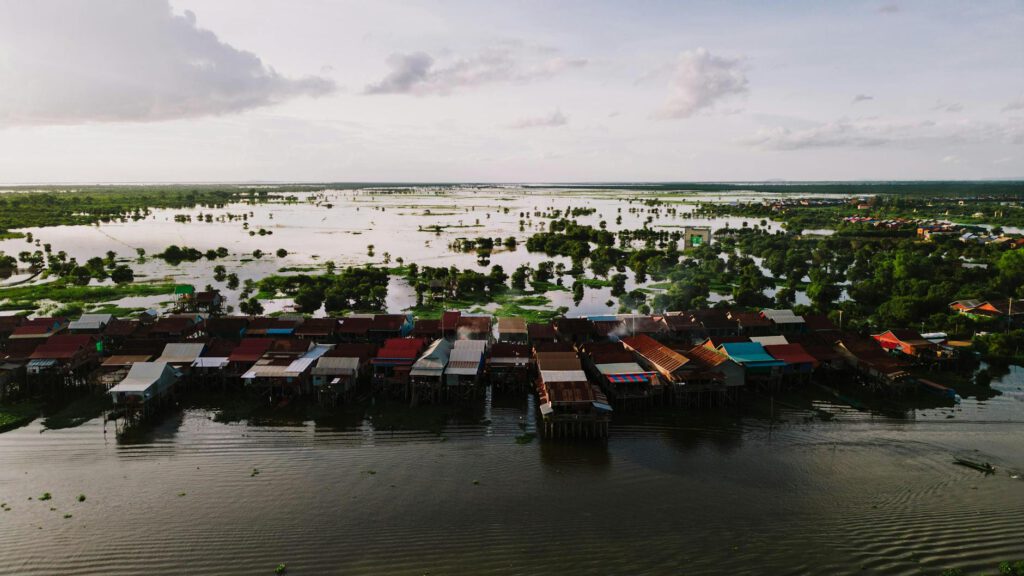Introduction
Southeast Asia’s vibrant riverside retail hubs are economic lifelines, but they face a persistent threat: flooding. Seasonal monsoons, rising sea levels, and unpredictable weather patterns put inventory at risk, leading to devastating losses. For retailers operating near waterways, flood-proofing inventory isn’t just a precaution—it’s a necessity for business continuity.
This guide explores actionable strategies to protect stock, minimize disruptions, and ensure resilience against floods. From storage solutions to emergency protocols, we’ll cover everything riverside retailers need to safeguard their assets.
Why Flood-Proofing Inventory is Critical for Riverside Retailers
Floods in Southeast Asia are frequent and severe. The World Bank estimates that annual flood damage in the region exceeds $1 billion, with small businesses bearing the brunt. For retailers, waterlogged inventory means:
- Financial losses from ruined goods and unsellable stock.
- Supply chain disruptions, delaying restocks and orders.
- Long-term reputational damage if customers can’t rely on consistent availability.
Proactive flood-proofing mitigates these risks, ensuring businesses stay operational even during extreme weather.
Subtopic 1: Assessing Flood Risks for Your Retail Location
Before implementing solutions, retailers must understand their specific flood risks.
Detail/Example: Conducting a Flood Vulnerability Audit
- Historical Data Review
- Check local flood maps and historical records to identify peak flood seasons and water levels.
-
Example: A Bangkok-based retailer might reference the 2011 Thailand floods, which submerged entire districts, to gauge potential risks.
-
Infrastructure Evaluation
- Assess the building’s elevation, drainage systems, and structural integrity.
-
Weaknesses like ground-floor storage or inadequate seals on doors/windows increase vulnerability.
-
Supply Chain Analysis
- Identify if suppliers or logistics partners are also in flood-prone zones, which could compound delays.
Subtopic 2: Flood-Resistant Inventory Storage Strategies
Once risks are mapped, retailers can adopt tailored storage solutions.
Steps/Strategies
- Elevate Inventory
- Use raised shelving or pallets to keep stock at least 1 meter above ground level.
-
For high-risk areas, consider mezzanine floors or vertical storage systems.
-
Waterproof Storage Containers
- Invest in airtight, plastic bins with locking lids instead of cardboard boxes.
-
Silica gel packs can be added to absorb residual moisture.
-
Modular Storage Solutions
-
Portable, stackable containers allow quick relocation of inventory if floods strike.
-
Flood Barriers and Seals
- Install removable barriers (e.g., sandbags, aluminum flood panels) at entry points.
- Apply waterproof sealants to walls and floors in storage areas.
Subtopic 3: Leveraging Technology for Flood Preparedness
Modern tools can enhance flood resilience with real-time monitoring and automation.
Tools/Tips/Resources
- IoT Flood Sensors
-
Devices like FloodFlash or SensorsUP detect rising water levels and send alerts via SMS/apps.
-
Cloud-Based Inventory Management
-
Platforms like Zoho Inventory or TradeGecko track stock in real time, aiding quick recovery post-flood.
-
Drones for Damage Assessment
-
Post-flood, drones can survey inaccessible areas to assess inventory damage faster.
-
Weather Forecasting Apps
- Windy or AccuWeather provide hyperlocal forecasts, helping retailers preemptively relocate stock.
Subtopic 4: Creating a Flood Emergency Plan
Preparation reduces panic. A clear emergency plan ensures staff and inventory are protected.
Actionable Steps
- Assign Roles
-
Designate a flood response team responsible for moving inventory, shutting off utilities, etc.
-
Pre-Pack Emergency Kits
-
Include tarps, pumps, and backup power banks in easily accessible locations.
-
Partner with Alternate Storage Facilities
-
Secure agreements with upland warehouses for emergency stock transfers.
-
Regular Drills
- Conduct biannual flood simulations to test response times and protocol efficiency.
FAQs
Q: How often should flood-proofing measures be reviewed?
A: Annually, or after any major flood event, to adapt to new risks or infrastructure changes.
Q: Are there government grants for flood-proofing businesses?
A: Yes—programs like Indonesia’s Climate Resilience Fund or Vietnam’s Disaster Risk Management initiatives offer support.
Q: Can insurance cover flood-damaged inventory?
A: Only if you have specific flood coverage. Standard policies often exclude it, so verify with providers.
Conclusion
For riverside retailers in Southeast Asia, flood-proofing inventory is a non-negotiable investment. By combining smart storage, technology, and proactive planning, businesses can turn vulnerability into resilience. The key lies in acting before the waters rise—because in flood-prone regions, preparation isn’t just about survival; it’s about sustaining growth against the tides.
Start implementing these strategies today to protect your inventory, your customers, and your bottom line.

